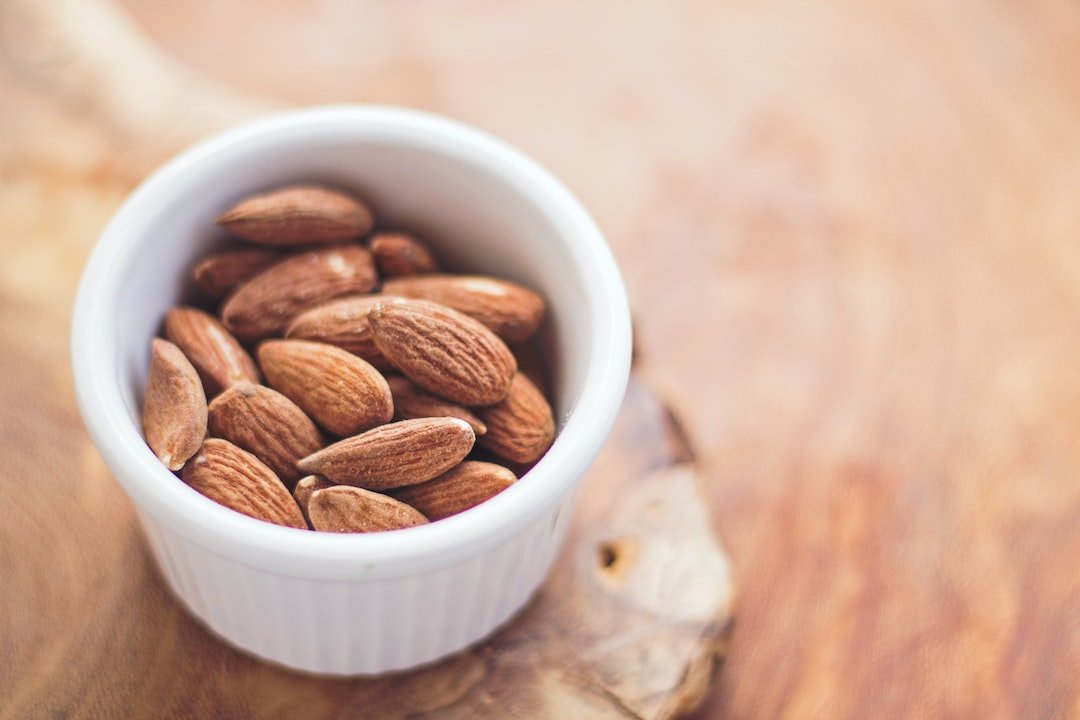The Fast Metabolism Diet is a popular diet plan created by nutritionist and author Haylie Pomroy. It is designed to help individuals boost their metabolism and lose weight by eating specific foods in a specific order. The diet consists of three phases, each with its own purpose and set of guidelines. By following these phases, individuals can reset their metabolism, improve digestion, and increase energy levels.
Key Takeaways
- The Fast Metabolism Diet is a three-phase diet designed to reset your metabolism and promote weight loss.
- Phase 1 focuses on eating high-glycemic, nutrient-dense foods to reduce stress and inflammation in the body.
- Foods to eat in Phase 1 include fruits, grains, and lean proteins, while foods to avoid include dairy, wheat, and processed foods.
- A sample meal plan for Phase 1 might include oatmeal with berries for breakfast, a turkey wrap for lunch, and grilled salmon with quinoa for dinner.
- Tips for success in Phase 1 include planning meals ahead of time, drinking plenty of water, and avoiding alcohol and caffeine.
Exploring the Three Phases of the Diet
The Fast Metabolism Diet is divided into three phases: Phase 1, Phase 2, and Phase 3. Each phase has a specific purpose and set of guidelines that must be followed in order to achieve optimal results.
Phase 1 focuses on resetting the metabolism by increasing the intake of healthy carbohydrates and fruits. This phase lasts for two days and is designed to help the body release stored fat and increase energy levels. Phase 2, which lasts for two days as well, focuses on building lean muscle and stabilizing blood sugar levels. This phase includes an increased intake of protein-rich foods such as lean meats and legumes. Finally, Phase 3 is a maintenance phase that lasts for three days and focuses on maintaining the progress made in the previous phases. This phase includes a balance of all food groups and allows for more flexibility in food choices.
It is important to follow the phases in order because each phase builds upon the previous one. Skipping or altering the order of the phases can disrupt the metabolic reset process and hinder weight loss efforts.
The Purpose and Benefits of Phase 1
Phase 1 of the Fast Metabolism Diet is designed to reset the metabolism by increasing the intake of healthy carbohydrates and fruits. By doing so, it helps to release stored fat and increase energy levels. This phase also focuses on improving digestion by incorporating foods that are rich in fiber.
One of the main benefits of Phase 1 is increased energy. By increasing the intake of healthy carbohydrates and fruits, the body is provided with a steady source of energy throughout the day. This can help individuals feel more energized and focused, making it easier to stick to the diet plan.
Another benefit of Phase 1 is improved digestion. By incorporating foods that are rich in fiber, such as whole grains and fruits, this phase helps to promote regular bowel movements and prevent constipation. Improved digestion can lead to better nutrient absorption and overall gut health.
Foods to Eat and Foods to Avoid in Phase 1
In Phase 1 of the Fast Metabolism Diet, there are certain foods that are recommended and others that should be avoided. The recommended foods for this phase include healthy carbohydrates such as brown rice, quinoa, and sweet potatoes, as well as fruits such as berries, apples, and oranges. These foods provide the body with a steady source of energy and help to release stored fat.
On the other hand, there are certain foods that should be avoided in Phase 1. These include processed foods, refined sugars, caffeine, alcohol, and dairy products. These foods can slow down the metabolism and hinder weight loss efforts. It is important to avoid these foods during Phase 1 in order to achieve optimal results.
Sample Meal Plan for Phase 1
Here is an example of a day's worth of meals and snacks for Phase 1 of the Fast Metabolism Diet:
Breakfast: Oatmeal with berries and a side of scrambled eggs
Snack: Apple slices with almond butter
Lunch: Grilled chicken breast with brown rice and steamed vegetables
Snack: Carrot sticks with hummus
Dinner: Baked salmon with quinoa and roasted Brussels sprouts
Snack: Mixed berries with Greek yogurt
It is important to note that meal planning and preparation are key to success in Phase 1. By planning and preparing meals in advance, individuals can ensure that they have the necessary foods on hand and avoid making unhealthy food choices.
Tips for Success in Phase 1

Here are some tips for staying on track during Phase 1 of the Fast Metabolism Diet:
1. Keep a food journal: Keeping track of what you eat can help you stay accountable and identify any patterns or triggers that may be hindering your progress.
2. Find support: Joining a support group or finding a diet buddy can provide motivation and accountability. It can also be helpful to share tips, recipes, and success stories with others who are following the same diet plan.
3. Stay hydrated: Drinking plenty of water throughout the day can help to flush out toxins and keep you feeling full and satisfied.
4. Plan and prepare meals in advance: By planning and preparing meals in advance, you can avoid making unhealthy food choices when you are hungry or pressed for time.
5. Focus on whole, unprocessed foods: Choosing whole, unprocessed foods over processed foods can help to boost your metabolism and support weight loss efforts.
How Phase 1 Helps Reset Your Metabolism
Phase 1 of the Fast Metabolism Diet helps to reset your metabolism by increasing the intake of healthy carbohydrates and fruits. By doing so, it helps to release stored fat and increase energy levels.
When you consume healthy carbohydrates and fruits, your body breaks them down into glucose, which is then used as fuel for your cells. By increasing the intake of these foods, you provide your body with a steady source of energy throughout the day. This helps to prevent blood sugar spikes and crashes, which can lead to cravings and overeating.
In addition, Phase 1 focuses on improving digestion by incorporating foods that are rich in fiber. Fiber helps to promote regular bowel movements and prevent constipation. This can lead to better nutrient absorption and overall gut health.
By following Phase 1 of the Fast Metabolism Diet, you can reset your metabolism and improve digestion, leading to increased energy levels and improved weight loss results.
The Role of Exercise in Phase 1
Exercise plays an important role in Phase 1 of the Fast Metabolism Diet. It helps to boost your metabolism, burn calories, and build lean muscle mass.
During Phase 1, it is recommended to incorporate both cardiovascular exercise and strength training into your routine. Cardiovascular exercise, such as running or cycling, helps to increase your heart rate and burn calories. Strength training, such as lifting weights or doing bodyweight exercises, helps to build lean muscle mass, which can increase your metabolism and help you burn more calories throughout the day.
It is important to listen to your body and choose exercises that you enjoy and feel comfortable doing. It is also important to consult with a healthcare professional before starting any new exercise program.
Common Questions and Concerns About Phase 1
Here are some common questions and concerns about Phase 1 of the Fast Metabolism Diet:
1. Will I feel hungry on Phase 1?
Some individuals may experience hunger during Phase 1, especially if they are used to consuming a higher amount of calories. To combat hunger, it is important to eat regular meals and snacks throughout the day and choose foods that are high in fiber and protein.
2. What if I don't like certain foods on the recommended list?
If you don't like certain foods on the recommended list, you can try substituting them with similar foods that have similar nutritional profiles. For example, if you don't like sweet potatoes, you can try substituting them with butternut squash or pumpkin.
3. Can I drink coffee or alcohol during Phase 1?
Coffee and alcohol are not recommended during Phase 1 of the Fast Metabolism Diet. These beverages can slow down the metabolism and hinder weight loss efforts. It is best to avoid them during this phase.
4. Can I have dairy products during Phase 1?
Dairy products are not recommended during Phase 1 of the Fast Metabolism Diet. They can be difficult to digest and may cause bloating or other digestive issues. It is best to avoid them during this phase.
Moving on to Phase 2: What to Expect
After completing Phase 1 of the Fast Metabolism Diet, individuals can move on to Phase 2. This phase focuses on building lean muscle and stabilizing blood sugar levels.
In Phase 2, the focus shifts to protein-rich foods such as lean meats, legumes, and eggs. These foods help to build lean muscle mass, which can increase metabolism and help burn more calories throughout the day. It is important to continue following the principles of the diet and avoid foods that are not recommended in this phase.
During Phase 2, individuals may experience increased energy levels, improved digestion, and continued weight loss. It is important to continue following the principles of the diet and stay consistent with meal planning and preparation.
Phase 1 of the Fast Metabolism Diet is an important part of the overall diet plan. It helps to reset the metabolism, increase energy levels, and improve digestion. By following the guidelines and recommendations for Phase 1, individuals can achieve optimal results and set themselves up for success in the following phases.
It is important to remember that each phase builds upon the previous one, so it is crucial to follow the phases in order. By doing so, individuals can maximize their weight loss efforts and achieve long-term success.
The Fast Metabolism Diet is not a quick fix or a fad diet. It is a lifestyle change that focuses on nourishing your body with whole, unprocessed foods and incorporating regular exercise. By following the principles of the diet and staying consistent, individuals can achieve their weight loss goals and improve their overall health and well-being.
If you're interested in learning more about the fast metabolism diet and its different phases, you might also enjoy reading an article titled "Promoting Healthy Habits Instead of Obsessing Over Weight During Adolescence." This article discusses the importance of focusing on overall health and well-being rather than solely on weight loss, especially during the crucial adolescent years. It provides valuable insights and tips for promoting a healthy lifestyle for teenagers. Check it out here.
FAQs
What is Phase 1 of the fast metabolism diet?
Phase 1 of the fast metabolism diet is the first phase of the diet plan that lasts for two days. It is designed to help reset the metabolism and prepare the body for the next two phases.
What are the goals of Phase 1 of the fast metabolism diet?
The goals of Phase 1 of the fast metabolism diet are to increase the intake of healthy foods, reduce inflammation, and improve digestion. It also aims to increase the body's metabolic rate and prepare it for the next two phases.
What foods are allowed in Phase 1 of the fast metabolism diet?
Phase 1 of the fast metabolism diet allows for the consumption of healthy fats, lean proteins, and low-glycemic index fruits and vegetables. It also encourages the intake of herbal teas and water.
What foods are restricted in Phase 1 of the fast metabolism diet?
Phase 1 of the fast metabolism diet restricts the consumption of processed foods, sugar, caffeine, alcohol, dairy, wheat, and soy. It also limits the intake of high-glycemic index fruits and vegetables.
What are the benefits of Phase 1 of the fast metabolism diet?
The benefits of Phase 1 of the fast metabolism diet include improved digestion, reduced inflammation, increased energy levels, and weight loss. It also helps to reset the metabolism and prepare the body for the next two phases of the diet plan.
Is Phase 1 of the fast metabolism diet safe?
Phase 1 of the fast metabolism diet is generally safe for healthy individuals. However, it is important to consult a healthcare professional before starting any new diet plan, especially if you have any underlying health conditions or are taking any medications.














